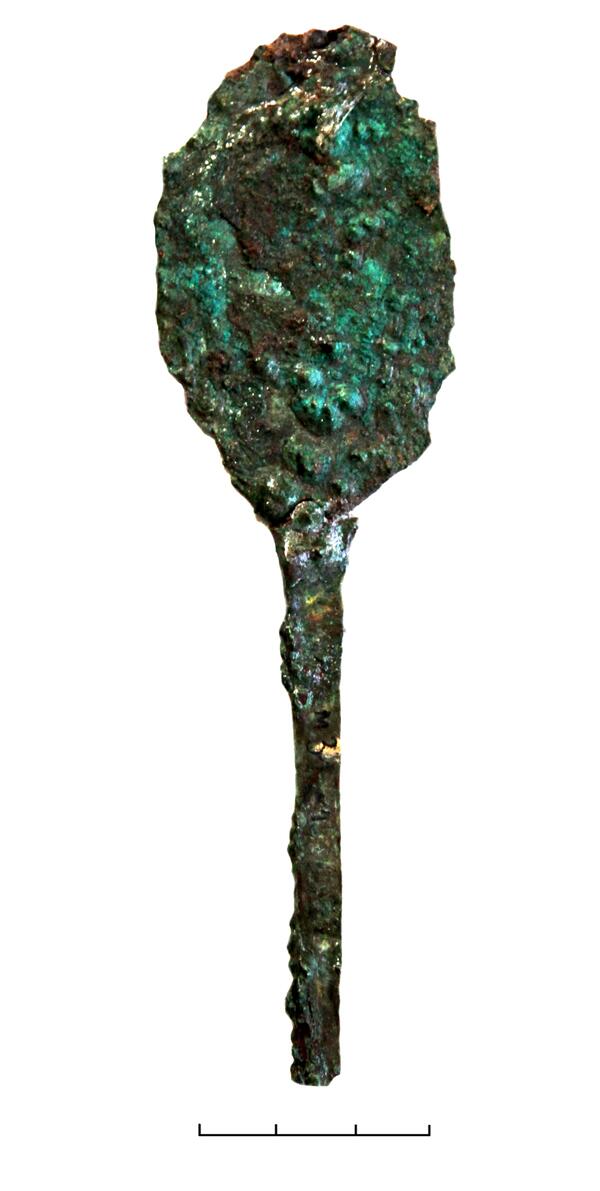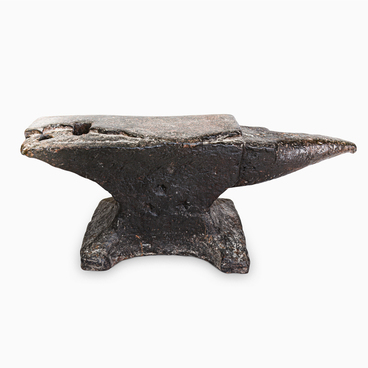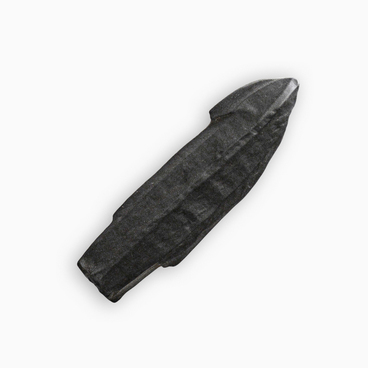Metal mirrors were known in Siberia since the Bronze Age. They were found in the cultural layer of settlements, were included in the grave goods of some of the deceased, and some of them were accidental finds. The mirrors were disc or square in shape.
The mirror presented in the museum’s collection is oval in shape, and has a rectangular handle which smoothly tapers to the end. The object dates back to the early Bronze Age (14th–9th centuries BCE). Experts attribute this mirror to the Andronovo cultural and historical community. Such objects were quite widespread in the Bronze Age in the forest-steppe zone of Northern Eurasia, from the Ural Mountains to Mongolia.
The placement of mirrors in Andronovo burials is the following: in a man’s burial, it lay at the ribs on the right side, in a woman’s burial — at the right hand, in a baby’s burial, the mirror was at the left elbow.
According to ancient beliefs, metal — bronze,
silver, gold — had protective and life-giving functions. This applied fully to
mirrors. Mirrors are often associated with the cult of the sun and through it
with fertility, which people always cared about and conducted various rituals
to ensure it. The scholar Evgeniy Sergeyevich Bogdanov says the following about
the connection of mirrors with this cult,



